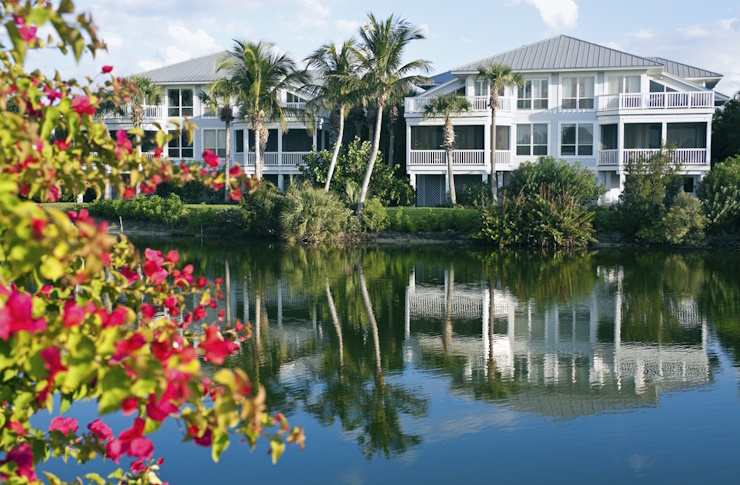Popular Living Communities for Those 55+ Are Getting Noticed
The landscape of senior living has undergone a remarkable transformation in recent years. No longer limited to traditional nursing homes, today's 55+ communities offer diverse lifestyle options that cater to varying needs, preferences, and budgets. From affordable senior apartments to luxury retirement communities, these specialized living arrangements are gaining attention for their innovative amenities, social opportunities, and tailored services designed specifically for older adults looking to maintain independence while accessing support when needed.
What Are the Different Types of Senior Living Communities Available?
Senior living encompasses a spectrum of options designed to meet different needs and lifestyles. Independent living communities offer maintenance-free apartments or homes for active seniors who don’t require daily assistance. Assisted living provides housing along with help for daily activities like medication management and personal care. Senior apartments for rent typically feature age-restricted buildings with accessible designs and community spaces. Memory care communities specialize in supporting those with Alzheimer’s or dementia, while continuing care retirement communities (CCRCs) offer multiple levels of care on one campus, allowing residents to transition between care types as needs change without relocating.
The distinction between these options matters greatly when searching for the right fit. Some communities focus exclusively on independent seniors seeking low-maintenance living, while others provide comprehensive healthcare services alongside residential accommodations. Understanding these differences helps seniors and their families make informed decisions based on current and anticipated future needs.
How Has Affordable Senior Living Evolved in Recent Years?
Affordable senior housing has seen significant development through government programs and nonprofit initiatives. Low income senior housing options, often subsidized through programs like Section 202 and Section 8, provide rent assistance based on income qualifications. Many communities now offer tiered pricing models that make quality senior living accessible to those with modest means without sacrificing essential amenities.
Modern affordable senior living communities frequently include features once reserved for higher-end developments. Community gardens, fitness centers, transportation services, and organized social activities have become standard offerings. Additionally, some developers are repurposing existing buildings into senior-friendly housing in central locations, providing affordable options in desirable neighborhoods. Housing cooperatives for seniors represent another emerging model where residents purchase shares in the community rather than individual units, often resulting in lower monthly costs while maintaining quality standards.
What Makes Luxury Senior Living Communities Stand Out?
Luxury senior living has redefined retirement with resort-style amenities and premium services. These upscale communities typically feature spacious apartments or cottages with high-end finishes, gourmet dining options with chef-prepared meals, and concierge services. Wellness programs in these communities often include swimming pools, spas, fitness centers with personal trainers, and yoga studios.
Beyond physical amenities, luxury communities distinguish themselves through personalized experiences and exclusive programming. Residents might enjoy wine tastings, guest lectures from renowned speakers, organized trips abroad, and partnerships with local cultural institutions. Many luxury communities are strategically located in desirable areas with beautiful views or proximity to upscale shopping and dining. While these communities command premium prices, they deliver a lifestyle focused on comfort, convenience, and enrichment that appeals to seniors seeking a high standard of living in their retirement years.
What Should You Consider When Searching for Senior Apartments for Rent?
When evaluating senior apartments for rent, location should be a primary consideration—proximity to family, healthcare facilities, and favorite activities contributes significantly to quality of life. Assess the community’s accessibility features, including step-free entrances, wider doorways, grab bars, and elevator access for multi-story buildings. Review the lease terms carefully, noting any age requirements, pet policies, guest restrictions, and rules specific to senior communities.
Investigate the social environment by asking about organized activities, common spaces, and opportunities for resident interaction. Transportation options are crucial for maintaining independence, so check whether the community offers shuttle services to shopping, medical appointments, and entertainment venues. Finally, consider future needs—some senior apartments offer the option to add services as needs change, while others may require relocation if additional assistance becomes necessary. Taking time to thoroughly evaluate these aspects helps ensure the chosen community supports both current lifestyle preferences and potential future requirements.
How Are Senior Assisted Living Apartments Different from Regular Apartments?
Senior assisted living apartments fundamentally differ from conventional housing by combining residential accommodations with supportive services. These apartments typically feature enhanced safety elements like emergency call systems, accessible bathrooms with walk-in showers, and grab bars. Wider doorways, lever-style door handles, and barrier-free floor plans accommodate mobility devices and prevent falls.
The service component represents the most significant distinction. Assisted living provides personalized support with daily activities like medication management, bathing, dressing, and meal preparation. Professional staff remains available 24/7, offering peace of mind for residents and their families. Most communities include housekeeping, laundry services, and transportation to appointments. Meals are typically served in communal dining areas, promoting socialization while ensuring proper nutrition. Additionally, licensed nurses often oversee healthcare coordination, working with residents’ physicians to manage chronic conditions. This combination of housing and supportive services creates an environment where seniors can maintain dignity and independence while receiving necessary assistance.
What Cost Factors Should Be Considered for Different Senior Living Options?
When evaluating senior living options, understanding the full cost picture is essential for making informed decisions. Pricing structures vary significantly between community types and providers, with factors like location, size of living space, included services, and level of care driving cost differences.
| Housing Type | Average Monthly Cost Range | What’s Typically Included | Additional Costs |
|---|---|---|---|
| Independent Living | $1,500-$4,000 | Housing, maintenance, activities, some meals, housekeeping | Healthcare services, personal care assistance |
| Senior Apartments (Market Rate) | $1,000-$3,500 | Housing, basic maintenance, minimal amenities | All utilities, activities, meals, transportation |
| Assisted Living | $3,500-$6,500 | Housing, meals, personal care, activities, housekeeping, transportation | Specialized care for complex medical needs |
| Low-Income Senior Housing | $400-$1,200 | Basic housing | Most utilities, meals, services |
| Luxury Senior Living | $4,500-$12,000+ | Premium housing, gourmet dining, extensive amenities, some care services | Higher-level medical care, specialized services |
Prices, rates, or cost estimates mentioned in this article are based on the latest available information but may change over time. Independent research is advised before making financial decisions.
Many seniors are surprised to discover that senior living often involves both base rates and à la carte services. While low income senior housing programs like Section 202 and Section 8 can significantly reduce costs for qualified individuals, waiting lists can be lengthy. Long-term care insurance, veteran’s benefits, and reverse mortgages represent potential funding sources worth exploring. Some communities offer “life care” contracts that guarantee stable rates even if care needs increase, while others charge separately for each service, potentially resulting in variable monthly costs.
Choosing the Right Senior Living Community for Your Lifestyle
Finding the perfect senior living situation ultimately depends on individual preferences, needs, and financial circumstances. The growing popularity of these communities stems from their ability to offer specialized environments where older adults can thrive among peers while accessing appropriate support services. Whether seeking affordable options that maximize value or luxury accommodations with premium amenities, today’s seniors benefit from unprecedented variety in housing choices designed specifically for their life stage.
As more adults reach retirement age, these communities continue evolving to meet changing expectations and preferences. By thoroughly researching options, visiting potential communities, and carefully assessing both current and anticipated future needs, seniors can identify living arrangements that support their desired lifestyle while providing necessary peace of mind regarding future care requirements.





